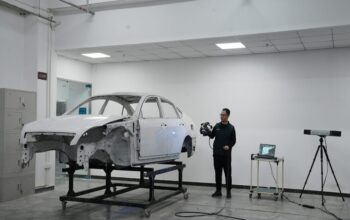
Ever since, our “Pradhan Mantri ji” talked about being vocal for local & becoming self-reliant, there is a buzz. All of us are chatting, debating, reading, thinking; Can India really become self-reliant? Is it for real? Or is it just marketing talks? Is it just chest thumping? Will there be any impact on my life? Can I help in making this change? What can I do outside of my day job or in the job to make it happen? Where to start, … blah blah blah …

If you are reading this article, it is one of two things either you believe that India is on the road to become self-reliant and you want to find out more about it, specifically how would you help to accelerate this change or you already have heard and read a lot about it, mostly crap and are left wondering is there any substance in this optimism?
Before you further read on, there is a very good news if you are either a technocrat or have something to do with engineering. You will have to perform a leading role in transforming modern India to become a self-reliant one. Starting from first industrial revolution, engineers have been central figure in bringing landmark changes those impact social and economic landscape.
Something incredible happened nearly 20 years ago, that changed fortunes for us Indians forever. If you are old enough and you can jog your memory back, you will recall Y2K event, or should I say Y2K problems. Y2K bug definitely was a colossal issue at the time, that threatened a number of security and infrastructure related issues. More than 600 Billion dollars were spent to resolve this issue. Most importantly, India provided engineers in great numbers to solve the problem.
Frankly speaking, this was a moment when the whole world sat down and took notice of Indian engineers not just in numbers but also of their sheer capabilities. This was key to open the floodgates of opportunities for our software engineers and would you believe the level of contribution that Indian IT sector makes to our GDP today? It is a whooping 160 Billion Dollars, 7% of our GDP, which was only around 1%, all those 20 years ago.
More than these statistics, if you ask common people on the road, they will be able to tell you the impact that IT sector has brought to us.
Lightening struck twice and I must say that it can only happen in India in a very positive sense. Almost four years ago, demonetization took place, and something incredible happened again. Whether the demonetization happened for right reasons or not, that is not the focus here, however the change that it accelerated was massive and I would even say unprecedented.
Incredible amount of work took place in a shortest space of time that the world has ever witnessed in the pursuit of building a robust digital infrastructure. It impacted in making it ever so easy and affordable to use internet anywhere in the country, use of digital payment services etc. etc. Honestly ask to yourself, how frequently do you use cash now a days? Would you have imagined this, five years ago? To share some statistics with you, more than 600 Million people (60 Crores) use internet daily in India.
You must be wondering, why I am sharing these stories here? What purpose do these stories solve?
These historical events are crucial to reflect upon while exploring answers for my first close question, when it comes to technological innovations, can India become self dependent?
These events have showed us how we Indians have adapted faster than anyone in the world in the past, and have the capacity, tenacity and capability to turn crisis into opportunities. In-fact, even as difficult as bringing cultural change in such a diverse and vast country has also been achieved. Would you not agree with me, if I say that we have become DIGITAL as a society now? Women, men from all parts of the country are no different when it comes to using internet. India now has around 10% more rural internet users than urban ones.
So, let us now try to answer the first question with your permission. Yes, it is absolutely Doable, not once but twice, we have achieved unthinkable in the past. Yes, we can absolutely become self-dependent.
With unique blend of Digital power, young talent, experienced heads, modern technology, new government policies, India is poised very well to capitalize on opportunities those the world has to offer, especially new and evolving business models and supply chain and surpass USA and China to not only become self-dependent but also new superpower in next decade.
If you are still reading this article, first of all thank you, and from here on you will read about how India can become self-dependent and what exactly needs to take place?
This is not just a patriotic and enthusiastic Indian making this statement. I am an engineer whose first dharma is to dissect the problem into small chunks, test out hypothesis and then conclude. This is exactly what I have followed here too, and with all responsibility and humility, I am making this conclusion that we can become self dependent in next decade. If you want to add any comment to this, I would request you to do so in the comment section below.
Before I go on and talk about how and what needs to be done, can you spot similarities in the two historic events those I mentioned earlier in this article?

These two historic events wouldn’t have been possible if basic form of technology would not have been available at all. Computer technology was already in a good shape by late 90’s and basic networking infra structure was already there from the beginning of this decade. We leveraged the existing technology fully and scaled it fast enough to result into outstanding results.
Do you know the specific sector that has been behind the growth of two modern superpowers USA and China and a historical & long lasting one The Great Britain? It is Manufacturing.
Epicenter of the first industrial revolution was The Great Britain and we all know the pivotal role it has played in its growth over the course of centuries. Are you aware that the manufacturing contributes almost 40% of China’s GDP at the moment? In absolute terms, manufacturing output for China is currently around 4 Trillion US Dollars, whereas It is 2.38 Trillion US Dollars for USA and only 0.2 Trillion US Dollars for India. Manufacturing transformed USA into an economic superpower, in mid 1950s to 1970s, its contribution to USA’s economy was around 35%.
The key to India’s journey towards absolute self dependence is its manufacturing output and MANUFACTURING only will have to stimulate this.
Foundation has already been set in last few years with initiatives such as Make in India, local-global partnerships of domestic industries etc., but significant results have still not been achieved. The manufacturing still only contributes 11% of our GDP, but it has reached to very close to its infection point, and the only way now is up and up and at a rapid rate.
These are really exciting times for Indian manufacturing, and I must say that this pandemic has presented the same level of opportunity if not even bigger that was once created by Y2K bug or demonetization. The manufacturing landscape is changing, new business models and supply chain are evolving and in simpler words more demand is generated for Indian companies that too with favorable conditions.
The excitement comes from the fact that there is so much scope for change and growth in our manufacturing sector.
If you have read so far, you are entering a phase, where you may start to feel goose bumps. The vehicle for this change is the same as before, and you guessed it right, it is Technology again. Now I am going to list down THREE SCENARIOS, which will pave the way for India to become new superpower of the world.
First scenario or secret is increasing exports. I am sure you must be wondering that this

is exactly what we do not do that well at the scale now? This is where the biggest difference will come from, and the good news is that all technologies (equipment’s, know how, solutions and software system) are available and companies who would become excellent in applications of these new technologies. For an example, Additive manufacturing will be extensively used in the future to produce complex parts and the access to technology is not restricted at all.
In the coming future, one does not need to be manufacturing genius to be able to produce and export complex parts. Technologies are and will be making it a level playing field. All those barriers for producing complex parts such as expensive set up, extensive years of know-how, dedicated supply chain, expensive process, bigger scales as an entry point will be broken. These are precisely few of our major challenges in growing export business. If you look at the opportunity, it is massive, for an example, currently our share in global export for auto parts is only around 1.5% whereas our imports for manufacturing is around 50%.
Second scenario, whoever will develop products and processes faster will be able to grab major share globally as well as domestically.

Traditionally, this has been our achille’s heel, this is where we had to rely a lot on knowledge transfer and foreign players. With the advent of new technologies such as multi axis CNC machines, additive machines, innovative metrology solutions, this barrier is also getting slowly broken. The biggest plus is with these new technologies is that FEEDBACK is fast, and FAIL/PASS is even faster.
To share with you a personal experience, I could not believe my eyes when I was walking through a leading research center in Western India, and found out that a new part that was scheduled to go to space only took 5 months to be designed, tested, productionized, saving at least 2 years.
So it has started to happen, it is happening. I am in no doubt that our domestic manufacturers, research centers will be able to develop products and processes faster enough than ever before.
Third and a very important scenario or secret is the increase in demand due to new supply chain.

Technology will enable LOCALIZATION and key is to achieve standardization in the way parts can be made. Modern manufacturing technology and metrology solutions are able to provide the traceability that is required to localize a supply chain.
I would like to express my humble gratitude to you for reading this article. Are you feeling excited now or still having few doubts? Please leave your remarks below.
I would like to finish this article by concluding that India is set to become self-dependent & Number ONE superpower in World in the next decade.
Dr. Sanjeev Kumar, Head of Business Development, Renishaw India










